Rheumatoid Arthritis
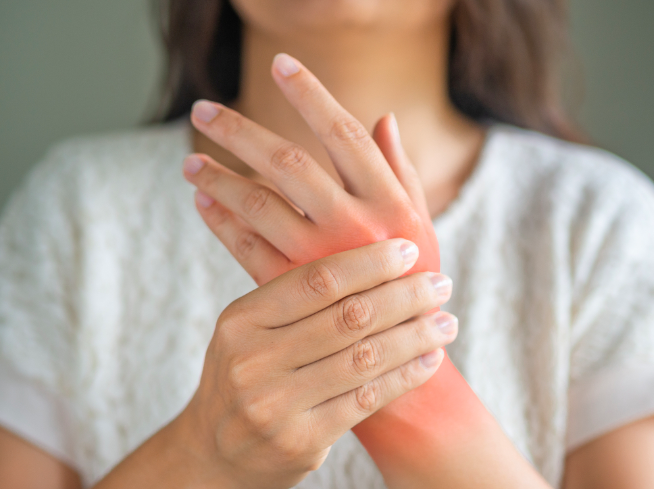
Waking up this morning, I knew it was going to be a bad day. The weather front moved in, and it suddenly turned colder. I had to work a few minutes just to get my legs working, and my hands cramped on the way down the stairs.
Rheumatoid arthritis takes a toll on your body in ways most people don't understand.
You can be active, pain-free, and productive one day only to wake up the next morning feeling twice your age and moving four times as slow. You can watch your joints swell up and track your decreasing range of motion.
But, it's the unpredictable nature of this slow-moving beast that makes it difficult to create plans, because we don't know how we're going to feel. And it's the long-term debilitation that frightens us the most.
And while there is no cure for rheumatoid arthritis, there are ways to slow down the progression and make life easier.
Why Does Rheumatoid Arthritis Hurt?
Most people use the term Arthritis to cover a lot of aches and pains. Specifically, it is a measurable degradation in your joints. The origin of the degradation will define rheumatoid versus osteoarthritis.
Osteoarthritis can strike anybody and comes from overusing/abusing your joints, mainly if that use has been from manual labor or sports. Rheumatoid arthritis, on the other hand, is an autoimmune disorder where the body attacks the synovial fluid and cartilage between the joints. You are ten times more likely to have osteoarthritis than rheumatoid arthritis.
Scientists aren't quite sure why the immune system recognizes the cartilage between our joints as something foreign to our bodies. Some research suggests that the damage began with osteoarthritis, and the body got confused in its attempt to repair itself. Others speculate that Lyme disease, toxins, and fat deposits between the joints cause the immune system to try and clear out the invader.

There are several signs and symptoms of rheumatoid arthritis that are slightly different than osteoarthritis and many other diseases. These include:
- Tender, warm, swollen joints
- Joint stiffness that is usually worse in the mornings and after inactivity
- Activity reduces pain
- Affects small joints, primarily
- Matched sets (left and right) of joints degrade together
- Rapid onset of pain and loss of motion (weeks to months)
- Frequent feelings of fatigue, illness, or apathy
Several other autoimmune issues feature some of these problems. Your doctor will need to perform a series of specific blood tests to determine if rheumatoid arthritis is your correct diagnosis, or another condition is causing your pain.
For example, Sjogren's Syndrome rapidly became one of the top autoimmune issues as doctors recognize what types of tests are necessary to diagnose this condition. Prior, most doctors diagnosed people as having either rheumatoid arthritis, lupus, or fibromyalgia. These conditions require different types of medications to help calm the immune system and reduce damage. In the Sjogren’s example, hydroxychloroquine, a malaria medication derivative used for gout, is the first medication that calms the immune system and prevents further damage.
Compare the symptoms of rheumatoid arthritis to osteoarthritis:
- Swollen joints – no tenderness or warmth
- Joint stiffness that is usually worse after activity
- Rest reduces pain
- Affects large joints, primarily
- Affects individual joints (left or right)
- Slow onset of pain and loss of motion (years)
Diet & Lifestyle Changes To Help Reduce the Pain of Rheumatoid Arthritis
Until you get to your doctor to test you, there are several things you can do that will benefit your body no matter what kind of arthritis or problem exists. The food and exercise recommendations we have below are recommended not only for rheumatoid arthritis but for most health conditions people are experiencing today. Making the first steps to eating better food and exercising will help you feel better
Foods for Rheumatoid Arthritis
A lot of foods irritate your body, causing increased inflammation and pain. Similarly, certain foods help reverse this.
The most common allergens of gluten, peanuts, shellfish, and dairy tend to irritate people with rheumatoid arthritis even if they do not have an allergy to these foods. A great way to help reduce the irritation in your body is to eliminate processed foods, bread, pasta, and dairy products.

Most people who make dietary changes and feel better find making two-thirds of their diet vegetables and fruit works best. The veggies that make people feel the best tend to be rich in colors orange and blue/purple. Some of these foods include squash, mangoes, bananas, blueberries, red cabbage, and carrots.
There's a lot of debate around the nightshade vegetables. Some people claim they make the pain and inflammation of rheumatoid arthritis worse, and some claimed they make it better. Still, others find no change at all.
They are all correct. Studies show that approximately one-third of people do not react to nightshade vegetables, one-third find relief from painful inflammation, and one-third find it makes the pain worse.
The only way to test whether nightshade vegetables are good, bad, or indifferent to you is to avoid all nightshades for approximately three weeks, and then consume a meal heavy in the nightshades directly after (not a pasta dinner, as the gluten may mask the effect). Pay attention to your body within the next 12 hours after the meal, and you will know how your body behaves.
Exercises for Rheumatoid Arthritis
Inactivity is the bane of arthritis, as you have heard time and again. Motion and keeping the joint active helps prolong the time your joint remains functional and helps reduce pain. As Rebecca-Jane Law, et al stated in the study Perceptions of the effects of exercise on joint health in rheumatoid arthritis patients, “Primarily, in order to enhance exercise prescription for RA patients, it is evident that the benefits of exercise need continual emphasis.”
If you've avoided exercise, the best way to start is to go for a walk. Some studies show that walking 15 to 30 minutes a day can help reduce the pain of arthritis. This is especially true if you have a dog. People who walk their dog walk farther, faster, and more often than people who don’t. Plus, it establishes good habits for your pet, which may experience arthritis from inactivity.

Structured weight-bearing exercises such as lifting weights and aerobics can reduce the pain you experience from arthritis. And, surprisingly, some studies show that gardening maybe one of the best exercises for people with arthritis. Repetitive motions, getting up and down, and mild weight-bearing activities help engage the entire body. Some doctors believe that the combination of the movement, being outside, and the satisfaction of growing plants all contributes to the benefits.
Supplements for Rheumatoid Arthritis
Much research has come out recently regarding different supplements that can help reduce the pain of arthritis and may help to rebuild damaged tissues. Curcumin, turmeric, capsaicin, ginger, and alliums (garlic and onion) have been shown to relieve pain, reduce inflammation, and in some cases, rebuild tissue.
Curcumin
What can we say about curcumin that hasn't been posted all over social media? It's undeniably an excellent anti-inflammatory and pain-relieving compound. Found in turmeric, curcumin has long use as an Ayurveda and Chinese medicine to help relieve the pain associated with aging, mostly arthritis.
Curcumin does much more for people with autoimmune diseases, particularly arthritis and other inflammatory conditions. Curcumin inhibits the inflammatory processes associated with autoimmune disease by regulating inflammatory cytokines. It also inhibits the pathway responses of the immune system that appear to be misfiring.
Curcumin may also help reverse some of the damage. In one study, the synovial fibroblasts that often occur in people with rheumatoid arthritis that are exposed to curcumin are unable to grow and begin apoptosis, or cell death. In general, curcumin helps relieve pain and inflammation while helping the body restore its health.
Hyaluronic Acid
Hyaluronic acid is a naturally occurring polysaccharide within the body whose primary purpose is to keep your skin, connective tissue, and mucous membranes lubricated and moist. When it comes to arthritis, it helps keep proper fluid within the synovial membranes, cartilage, and throughout the tendons and ligaments. A loss of this acid increases your chance of arthritis and pain.
In patients with rheumatoid arthritis, the levels of hyaluronic acid significantly decrease, while free radicals increase. Some studies suggest that hyaluronic acid in the synovial fluid helps reduce free radical damage and plays an active protecting roll against arthritis.
Some researchers have combined hyaluronic acid with tyramine in a gel and found that it may be a useful drug carrier for the treatment of rheumatoid arthritis. And combined with some medication, it helps reduce several of the factors for inflammation related to autoimmune issues.
Collagen
As one of the major structural proteins in the connective tissues of our body, maintaining this protein is essential. Our connective tissue contains upwards of 35% of collagen, and continuously replaced as damage, aging, and other factors contribute to degradation.
A primary source of collagen in our diet is bone broth. In recent years, many studies have started to come out about consuming bone broth to maintain joint health.People who use collagen show fewer swollen joints, have joint tenderness, and increase the time they can walk. However, although the people felt better, there was no significant change in the patient’s laboratory results.
In a study from the New England Journal of Medicine, patients who receive type 2 and type 3 collagen experience a reduction in leukocyte inhibitory factor, which reduces their inflammation.
Vitamin D
Many various studies are in agreement – you increase your risk for rheumatoid arthritis by being deficient in vitamin D. This is primarily due to the role of vitamin D as a regulator of calcium homeostasis and immunomodulation.
In a study that followed 152 women with rheumatoid arthritis for 11 years, an inverse association happens between rheumatoid arthritis and vitamin D intake. The women who have more vitamin D in their diet and through supplementation had less pain and fewer markers for autoimmune issues.
Other studies show that rheumatoid arthritis is also closely related to bone loss. Vitamin D and calcium, which we’ll cover next, play significant roles in bone loss. Vitamin D deficiency was shown to decrease the levels of calcium in the body, both inhibiting proper bone formation, and robbing the bones of store calcium.
Vitamin D has immunoregulatory properties, helping various immune cells correctly identify Invaders to the body.
Calcium
Calcium works with vitamin D to help bind the proteins in various immune system components and works to help to maintain bone integrity in people with rheumatoid arthritis. In multiple studies, calcium and vitamin D work together to keep that bone density.
Calcium is also significant for atherosclerosis cardiovascular disease. A study shows that women with chronic inflammation, such as from lupus or rheumatoid arthritis, had significantly increased odds of having coronary artery disease.Getting proper levels of calcium helps reduce your chances of coronary artery disease.
In a Japanese study, an inverse relationship was also found between calcium and the C-reactive protein common for people with many autoimmune issues, especially rheumatoid arthritis. The more calcium people consumed, the lower their C-reactive protein and inflammation levels.
Escaping The Pain Cycle
Rheumatoid arthritis and pain happen together, but you are in control of how much pain you experience. Eating a healthy diet that is mostly vegetables, getting regular exercise, and taking supplements that reduce the inflammation and suffering you experienced are all steps in taking back control of your life.
- Nutracare Team

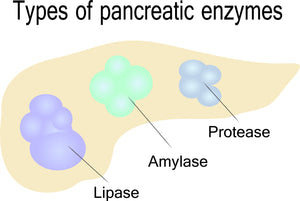

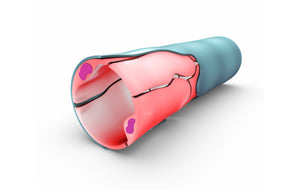
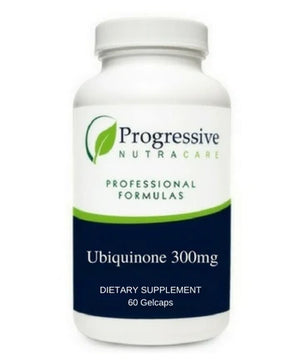

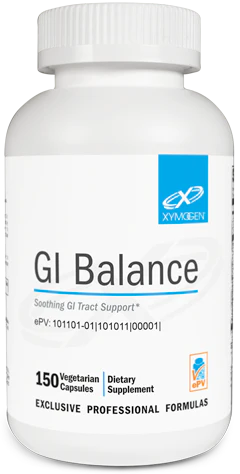
Comments 0